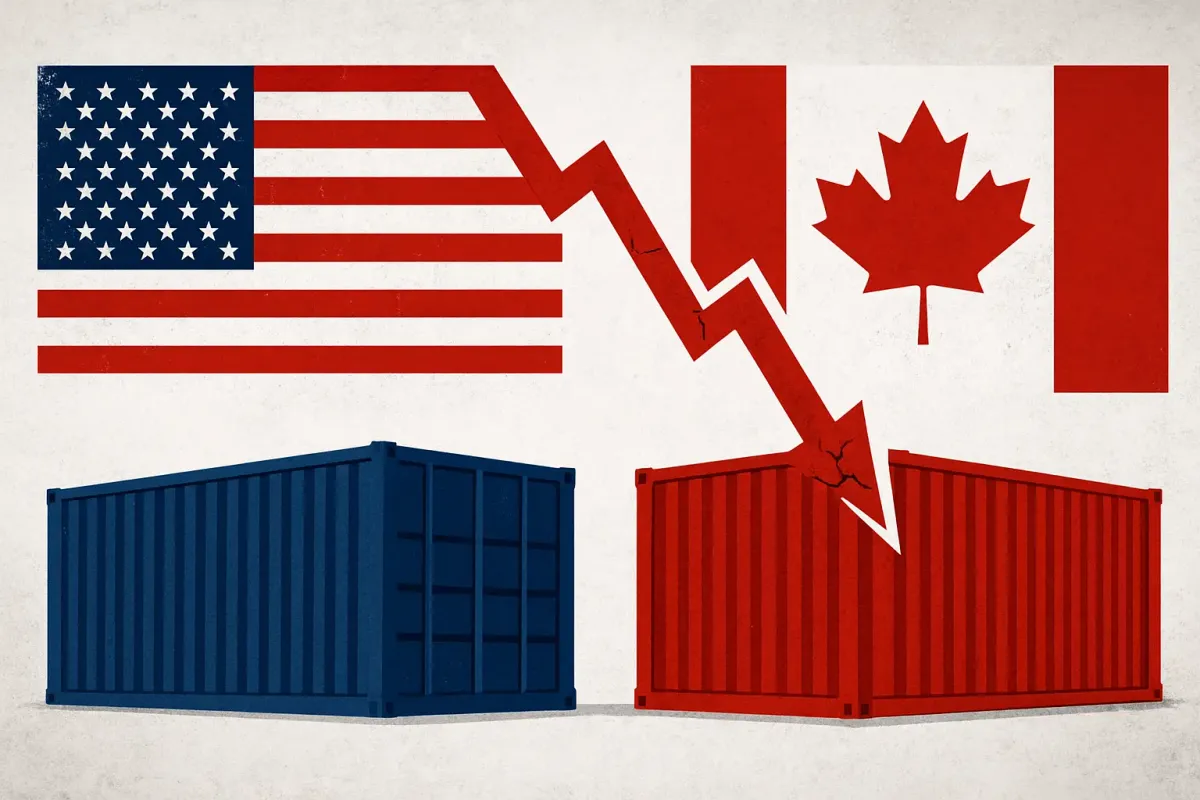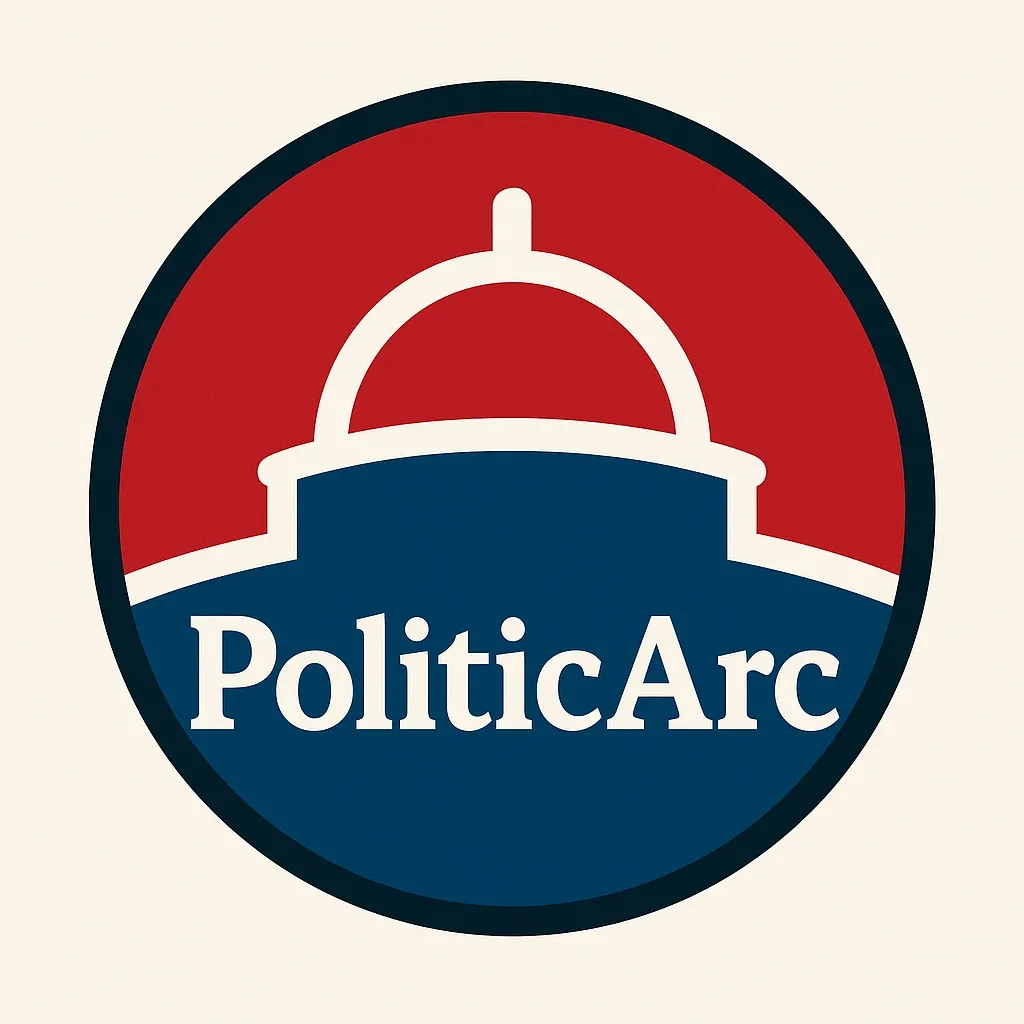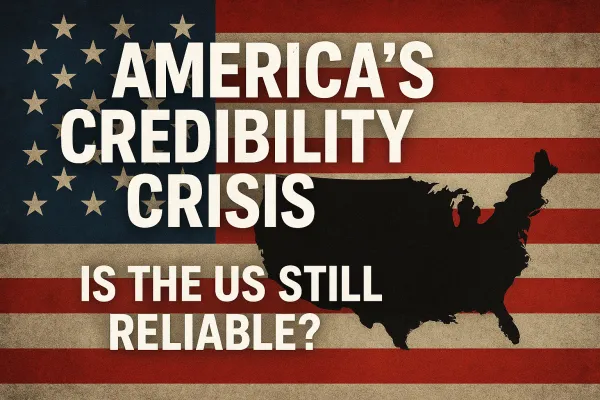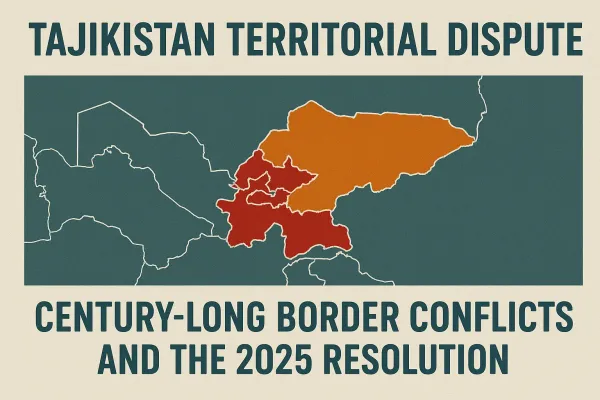The Constitutional Crisis Behind Trump's Canada Breakdown: What the Reagan Ad Reveals About Presidential Power
When Trump ended Canada negotiations on Oct 24, 2025, the White House blamed a Reagan ad. But the real story is a Supreme Court showdown over presidential tariff power. Canada responds by pivoting to the Indo-Pacific, while the Nov 5 ruling could redefine executive authority for generations.

When President Trump walked away from trade talks with Canada on October 24, 2025, the White House blamed a television commercial. But that ad featuring Ronald Reagan wasn't just about nostalgia—it exposed a brewing constitutional showdown over presidential power that could reshape American trade policy for generations.
Ontario's government paid for an advertisement invoking Reagan's pro-trade legacy, and Trump walked away from the negotiating table. That decision can't be separated from the Supreme Court case scheduled for November 5, 2025, which will decide whether presidents can impose tariffs unilaterally using emergency powers. These two events together reveal how constitutional law, international trade, and the breakdown of decades-old North American partnerships are colliding.
The Legal Architecture of Trump's Tariff Authority
The Supreme Court case coming up represents one of the most important tests of presidential authority in modern times. Here's the thing: Article I, Section 8 of the Constitution explicitly gives Congress—not the president—the power to impose taxes and tariffs. Since the 1930s, Congress has allowed presidents limited tariff authority, mainly for national security reasons and with specific rules.
Trump's 2025 tariff strategy goes far beyond those historical limits. While some sector-specific tariffs on steel and alluminum use Section 232 of the Trade Expansion Act because of military applications, his blanket tariffs on entire countries rely on the International Emergency Economic Powers Act of 1977. IEEPA (International Emergency Economic Powers Act) lets presidents "regulate importation or exportation" during declared national emergencies that create "unusual and extraordinary threats" to national security, foreign policy, or the economy.
The administration justified "trafficking tariffs" on Canada, Mexico, and China by citing fentanyl flows—despite evidence showing only 0.2% of fentanyl entering the United States comes from Canada. For the "Liberation Day" tariffs affecting virtually every other nation, Trump declared the longstanding U.S. trade deficit—which has existed since 1976 and actually grew during his first term—an "unusual and extraordinary threat."
Three separate federal courts have ruled against Trump's interpretation. On August 29, 2025, the U.S. Court of Appeals for the Federal Circuit ruled 7-4 that "IEEPA's grant of presidential authority to 'regulate' imports does not authorize the tariffs imposed by the Executive Orders." The court applied the major questions doctrine, which requires explicit congressional permission for actions with "vast economic and political significance." They stayed the ruling until October 14 to give the Supreme Court time to review it. The Supreme Court will hear oral arguments on November 5, 2025, with a decision expected by the end of the year.
The Non-Delegation Doctrine and Constitutional Boundaries
The legal challenge centers on whether IEEPA gives away too much congressional power. The non-delegation doctrine, established in a 1928 case, says Congress must provide an "intelligible principle" when delegating its constitutional powers to the executive branch. IEEPA requires addressing threats "to the national security, foreign policy, or economy of the United States," which might seem to meet that standard on the surface. But courts are questioning whether calling perpetual trade deficits and cross-border drug trafficking "emergencies" stretches the law beyond what Congress intended.
The history behind IEEPA reinforces this concern. Congress passed it in 1977 as part of post-Watergate reforms designed to limit executive emergency powers, not expand them. The House Committee report accompanying the legislation emphasized that "emergencies are by their nature rare and brief, and are not to be equated with normal ongoing problems." Trump's use of chronic conditions—a trade deficit running nearly five decades and fentanyl trafficking that evolved gradually—directly contradicts that intent.
The administration points to a 1975 case that upheld Richard Nixon's temporary 10% import surcharge, but that comparison doesn't hold up. First, the court in that case emphasized the "limited" and "temporary" nature of Nixon's tariffs. Second, Congress responded by passing IEEPA to narrow executive authority while simultaneously creating Section 122 of the Trade Act of 1974, which explicitly authorized presidential tariffs for balance-of-payments emergencies but capped them at 15% for 150 days. Trump's tariffs—ranging from 10% to 50% with no end date—violate the specific limits Congress established.
The Strategic Timing of the Reagan Advertisement
Ontario Premier Doug Ford's decision to fund and broadcast the Reagan ad makes perfect sense when you understand this constitutional context. The commercial aired across major U.S. television networks during prime viewing hours, featuring Reagan's speeches defending free trade and criticizing protectionism. Trump called the ad an attempt to "illegally influence" not just American public opinion but the Supreme Court itself before the November 5 oral arguments.
The timing—weeks before the Supreme Court hearing—was almost certainly intentional. By invoking Reagan, a Republican icon whose words contradict Trump's protectionist policies, Ontario aimed to split conservative support for the tariffs and create political pressure on Republican-appointed justices. Trump's reaction—ending all trade negotiations and accusing Canada of trying to manipulate the judiciary—shows how effectively the strategy threatened his legal position.
The president said he might personally attend the Supreme Court oral arguments, an unprecedented move that underscores what's at stake. Trump has publicly warned that striking down the tariffs would "literally destroy the United States of America" and eliminate leverage that he claims ended five of eight wars during his administration. Legal scholars describe these statements as extraordinary pressure tactics, suggesting an administration deeply worried about losing the case.
Canada's Strategic Pivot to the Indo-Pacific
Mark Carney knows how to read the room. When he told reporters that Canada was ready to negotiate with Washington "when the Americans are ready," he wasn't just being diplomatic. Behind that calm statement, Ottawa was already executing a pivot that had been years in the making—one that Trump's tantrum simply accelerated.
On October 16, Carney announced he'd visit Malaysia, Singapore, and South Korea starting October 24. The trip wasn't about sightseeing. It was about reshaping Canada's entire trade strategy away from its overwhelming dependence on the United States. The timing tells you everything: Carney left for Asia the exact same day Trump walked away from trade talks. That's not coincidence—that's contingency planning finally kicking into gear.
ASEAN isn't some minor trade bloc. We're talking about 692 million people and an economy worth over $4 trillion. Carney's trip focused specifically on agriculture, energy, tech, innovation, and critical minerals—sectors where Canada has genuine competitive advantages. During the visit, he attended both the ASEAN Summit and the APEC Economic Leaders' Meeting, where APEC countries alone represent 60% of global GDP and nearly half of all global trade. These aren't symbolic gatherings. They're where actual deals get made.
Canada launched its Export Diversification Strategy back in 2018 with a goal: boost overseas exports by 50% by 2025. That sounded ambitious at the time. Trump's chaotic tariff approach turned it into an urgent necessity. In June 2025, Canada started formal negotiations for an ASEAN-Canada Free Trade Agreement, targeting completion by early 2026. Parliamentary Secretary Naqvi's September trip to Southeast Asia reinforced this push, highlighting Canada's 2023 Strategic Partnership with ASEAN.
Here's what makes this shift different from typical diplomatic posturing: Canada isn't trying to replace American dependence with Chinese dependence. They're building what analysts call "diversification with depth"—resilient relationships across multiple partners so no single country can hold them hostage. Carney's potential meeting with Xi Jinping during the Asia trip, aimed at resetting relations despite recent diplomatic blow-ups, shows exactly this kind of pragmatic flexibility. Washington demands loyalty tests. Ottawa is building options.
🌏 Explore the Full Picture: The Indo-Pacific's New Power Dynamic
Canada's pivot isn't happening in isolation. Discover how countries across Asia are refusing to pick sides and building pragmatic strategies that challenge decades of conventional wisdom about alliances.
→ Read: The Indo-Pacific in 2025: Power, Pragmatism, and the Search for Balance
The Erosion of North American Economic Integration
The U.S.-Canada trade relationship isn't just breaking down—it's potentially collapsing structures that have defined North American commerce since 1988. Canada ships roughly 75% of its goods south to the United States, which creates obvious vulnerability. But here's what Trump apparently doesn't understand: that dependence flows both ways. Canadian supply chains feed American manufacturers who can't simply find replacement suppliers overnight.
Look at the small businesses getting crushed by this uncertainty. Learning Resources and hand2mind—two American companies making educational toys—are projecting $100 million in tariff costs for 2025. That's 45 times what they paid in 2024. To offset those costs, they'd need to raise prices by at least 70%, which would price them out of their own markets. They're not alone. Small businesses challenging the tariffs in court warn that average American households could see tax increases between $1,200 and $2,800 annually.
The Supreme Court case will decide whether presidents can impose these costs unilaterally without Congress having any say. If the Court backs Trump's interpretation of IEEPA, every future president gets essentially unlimited power to rewrite trade relationships by declaring emergencies. If the Court strikes the tariffs down, Trump's already promised he'll "find other ways" using different laws, though even Treasury Secretary Bessent admitted those workarounds wouldn't be "as efficient" or "as powerful".
The Institutional Resilience Test
The Supreme Court is about to find out whether conservative justices will protect constitutional structure even when it means limiting a Republican president. The Court recently blocked Trump's attempt to fire Federal Reserve Governor Lisa Cook, suggesting they might draw lines around institutions with "distinct historical traditions". But the pressure they're facing is unlike anything in modern constitutional history.
Trump has publicly warned that striking down his tariffs would "literally destroy the United States of America" and eliminate leverage he claims ended five wars. That's not legal argument—that's intimidation. The administration is also arguing that judicial review would "disrupt" sensitive diplomatic negotiations with virtually every major trading partner. Translation: they want the Court to believe that enforcing constitutional limits itself looks destabilizing.
The implications go way beyond tariffs. Trump has used emergency authorities to deploy troops domestically, speed up deportations under an 1798 law, and override standard procedures across multiple policy areas. If the Supreme Court validates his IEEPA interpretation, they're effectively endorsing a system where presidents bypass congressional constraints by declaring perpetual emergencies for routine policy disagreements. That's not constitutional governance—that's executive power without meaningful limits.
⚡ Trump's Trade Leverage Claims: Rhetoric vs Reality
The president claims tariffs ended wars and forced policy changes worldwide. But how do these assertions hold up when examining specific relationships—like US pressure on India over Russian oil?
→ Fact-Check: Trump's Claim vs India's Energy Reality: Will New Delhi Stop Buying Russian Oil — Or Just Diversify Smarter?
The Multipolar Trade Architecture Emerging
While North America is tearing itself apart over tariffs and constitutional authority, the Indo-Pacific is quietly building something different. At the 2025 Shangri-La Dialogue, French President Macron laid out what he called "strategic flexibility"—refusing to choose between Washington and Beijing, and instead building coalitions based on specific shared interests. Middle powers from India to South Korea heard that message loud and clear.
Canada's Asia strategy shows exactly what this new architecture looks like. Ottawa isn't trying to swap one overlord for another. They're building diverse relationships across ASEAN, Japan, South Korea, and India that give them genuine choices and reduce any single partner's ability to coerce them. The October 2025 Canada-India partnership on technology, infrastructure, and critical minerals demonstrates how countries can fight over some issues while cooperating on others. That kind of compartmentalization was impossible in the Cold War era. Now it's standard practice.
This transformation completely undermines Washington's traditional assumptions about alliances. For decades, U.S. policymakers assumed allies would accept asymmetric terms because they valued security guarantees and market access above everything else. Trump's tariff chaos shattered that assumption. When your dominant partner becomes dangerously unpredictable, you start building backup plans even if they're expensive and complicated. Canada just learned that lesson the hard way.
Conclusion: Beyond the Reagan Ad
Ontario will probably pull that Reagan advertisement after it airs during the World Series, exactly as Premier Ford promised—ensuring maximum American viewership one last time. But the constitutional, economic, and geopolitical shifts it triggered aren't going anywhere, regardless of how the Supreme Court rules in November.
If the Court backs Trump's tariff authority, it legitimizes a massive expansion of presidential power that goes far beyond trade. If the Court strikes the tariffs down, Trump will hunt for alternative legal mechanisms while continuing to bully trading partners through non-tariff measures. Either way, fundamental questions about congressional authority, economic integration, and how alliances actually work remain unresolved.
Canada's accelerated shift toward Asia, Japan's coalition crisis, and India's balanced partnerships all signal the same thing: middle powers are adapting to a world where no single country can dictate terms on everything. The Reagan ad controversy ended one chapter of U.S.-Canada negotiations, but it kicked off something bigger: the slow-motion collapse of North American economic integration and the rise of flexible, multi-partner frameworks that define how international commerce actually works now.
Related Articles
- The Indo-Pacific in 2025: Power, Pragmatism, and the Search for Balance – Countries across the Indo-Pacific refuse to pick sides in 2025, crafting pragmatic approaches to power politics. See how this regional transformation directly enables Canada's strategic pivot away from US dependency.
- Tariff Shock 2.0: Why US–China Controls Are Repricing the World Economy – US–China tariffs and export controls are repricing the world—raising costs, constraining chips and minerals, and pushing supply chains to de-risk. Discover how these trade measures compare to Trump's broader tariff strategy against allies.
- India's Strategic Balancing Act - 2025: Managing Relations with the US, Russia, and China – Explore how India navigates great power competition through strategic flexibility—the same approach Canada is now adopting in its Indo-Pacific pivot and demonstrated in the October 2025 Canada-India partnership.
- Trump's Claim vs India's Energy Reality: Will New Delhi Stop Buying Russian Oil — Or Just Diversify Smarter? – Why India is unlikely to "quit" Russian crude overnight, and how diversification, pricing, and diplomacy shape a more pragmatic energy strategy—lessons parallel to Canada's "diversification with depth" trade approach.
- Power Plays: How the U.S. Leverages Energy and Climate for Global Diplomacy – See how major powers use economic governance tools for international influence—the same leverage Trump now claims through tariff authority and emergency powers.
- 2025 Russia–Ukraine War Analysis: NATO's Role, Trump, and What's Next – Understand the global geopolitical shifts reshaping alliances and middle-power strategies, providing broader context for the multipolar trade architecture emerging across the Indo-Pacific.





